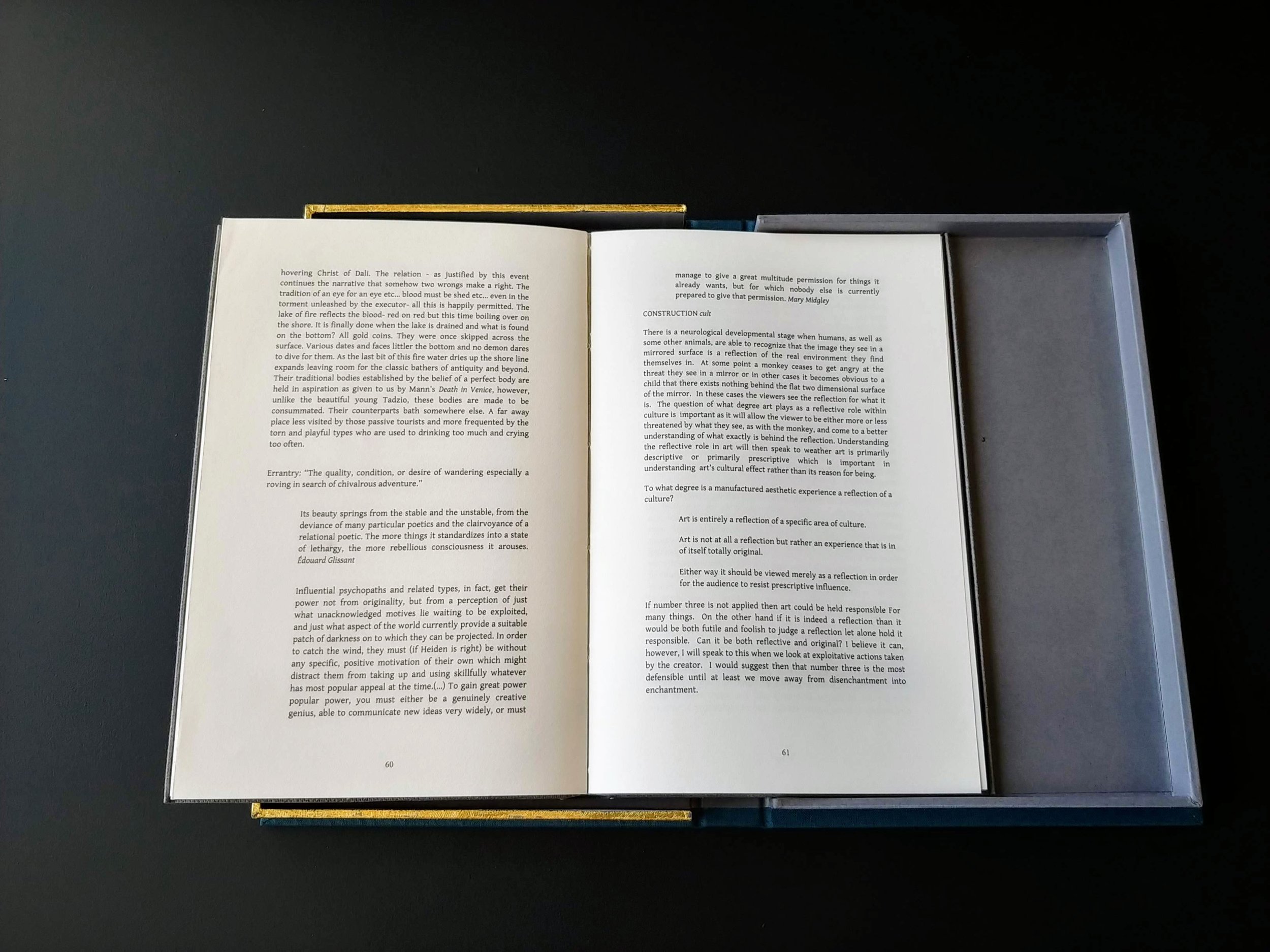CULTURICACID book with tent sculpture
Herringer Kiss Gallery, 2022
CULTURICACID
ntro to CULT URIC ACID,
exhibition book designed and created by Leslie Drisdale
Art’s task was to “make the world strange,” to shock the dulled sensibility, to forge a new reality by fragmenting the old. In art as in social practices, rebellion against a constricting and spiritually destitute society required the earnest, even systematic fluting of traditional values and assumptions. The sacred, made bland and empty by centuries of pious convention, seemed better expressed through the profane and blasphemous. Elemental passion and sensation could best draw forth the aboriginal wellsprings of the creative spirit. (i) Richard Tarnas
Art’s declaration of independence is thus the beginning of the end of art. (ii) Guy Debord
This project is the process in which I investigate and develop a desire to dissolve into a stranger more inventive world. Much of what I have despised throughout my life aesthetically, originates from masculinized culture where heteronormative practices reign supreme. That is not to say only by men but rather the simplistic manifestations and representations of masculinity in society which, in my case, showed itself most evidently in religion and art.
‘Cult’ or religion’s obsession with the control of the body is demonstrated through a conservative christian approach to sexuality and prudishness of bodily activity. I use the notion of ‘god’ many times throughout the text as a stand in for otherness and something essential. In this project I have used notions of bodily activity and the ‘uric’ to help understand this masculine control, and ‘acid’ as both an agent that both destroys and cleans like fire.
Citation—as a technique for creating genealogies—allows for a kind of lateral or wayward reproduction. As an art-making strategy, it’s a useful way to articulate a relationship to the practices that have sustained you, a way of recognizing belonging outside of normal kinship relations, as well as outside the implicit metaphor of patriliny that structures “artistic influence.” In my work, citation also has a pointedly queer ethic: It becomes an expanded field through which to rearrange desires, connections, and affinities beyond what’s allowable or available in the here and now, which has long been a strategy for queer subjects. It’s a way of imagining that you are not alone. (iv) Aliza Shvarts
I have made reference to Aliza Shvarts multiple times in this book and I have utmost respect for her work. I used her quote about citations (above) to help explain my numerous quotes and references, however, it is important to mention her concern with citations as well: “You can use citation to call on people who might not recognize themselves as sustaining you- but from whom you insist on drawing sustenance nonetheless. (v)” I use quote like assemblages and collage which has the potential of decontextualizing, reimagining, and hopefully profaning them.
iTarnas, Richard. The Passion of the Western Mind: Understanding the Ideas That Have Shaped Our World View. PIMLICO, 2010.
ii Debord, Guy. The Society of the Spectacle. Critical Editions, 2021.
iv Apter, Emily. “A Conversation With Aliza Shvarts.” October, no. 176, 2021, pp. 85–110., https://doi.org/10.1162/octo_a_00428.
v Apter, Emily. “A Conversation With Aliza Shvarts.” October, no. 176, 2021, pp. 85–110., https://doi.org/10.1162/octo_a_00428.




